Music is the universal language
“Glory to God in the highest heaven, and on earth peace to those on whom his favor rests.” - Luke 2:14
Norse Guitar Feeds
This Will Destroy You Rig Rundown
The doomgaze titans from Texas hit the road this year to celebrate more than two decades together, and they brought some of their favorite noisemakers for the occasion.
Post-rock/doomgaze outfit This Will Destroy You, formed in San Marcos, Texas, in 2004, are marking 21 years together, and 20 years of their self-recorded debut Young Mountain, with an anniversary tour. In late June, the band played Nashville’s Basement East, where guitarists Jeremy Galindo and Nicholas Huft and bassist Ethan Billips met up with PG’s Chris Kies to share what gear they packed for the roadtrip.
Brought to you by D’Addario
Trusty Tele
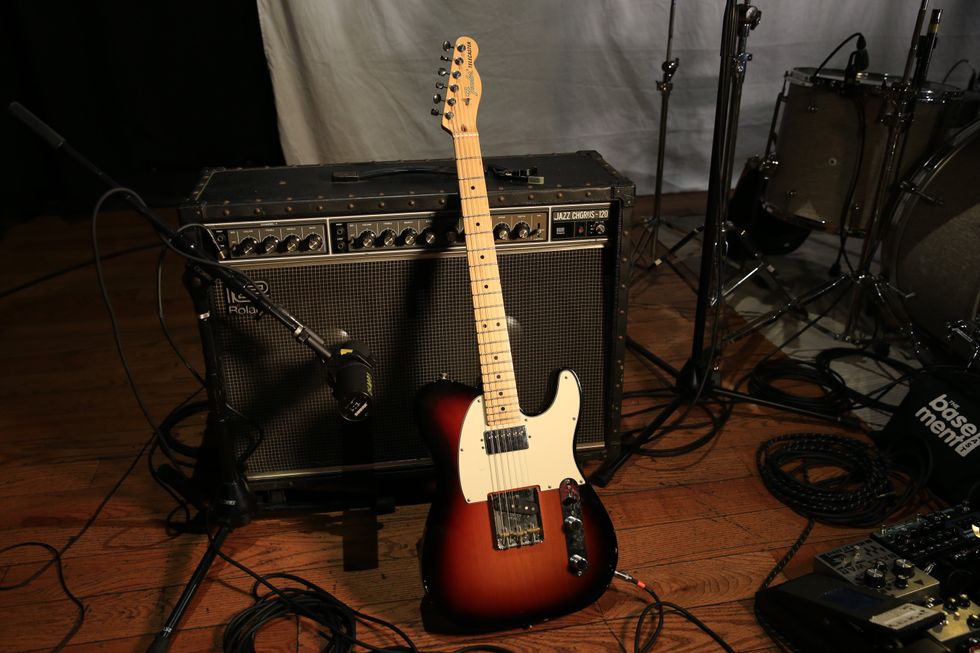
Galindo started off playing electric on his brother’s Fender Telecaster, and he’s never looked back. He’s played various models over the years, but got this Fender American Performer Telecaster two years ago. He strings it with .011–.052 strings for slightly more body and fullness, and tunes it to E-flat standard. Galindo mostly plays with his fingers, but when he picks he uses some of the thinnest picks he can find.
No Tubes? No Problems
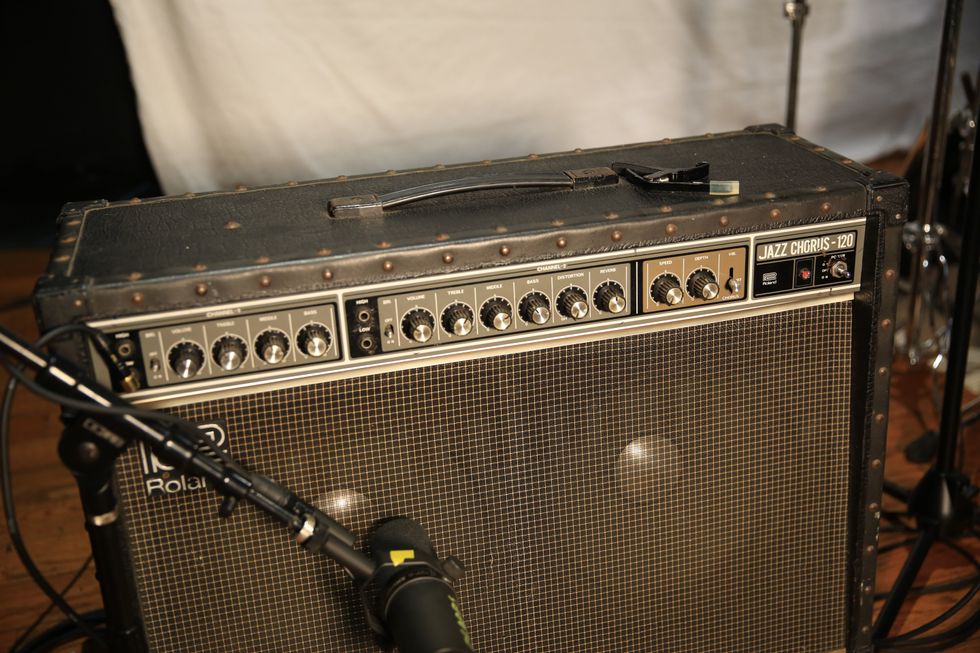
A Music Man HD-130 is Galindo’s always-and-forever, but on the road, he likes this Roland Jazz Chorus 120 for its tubeless reliability and easy clean sounds.
Jeremy Galindo’s Pedalboard
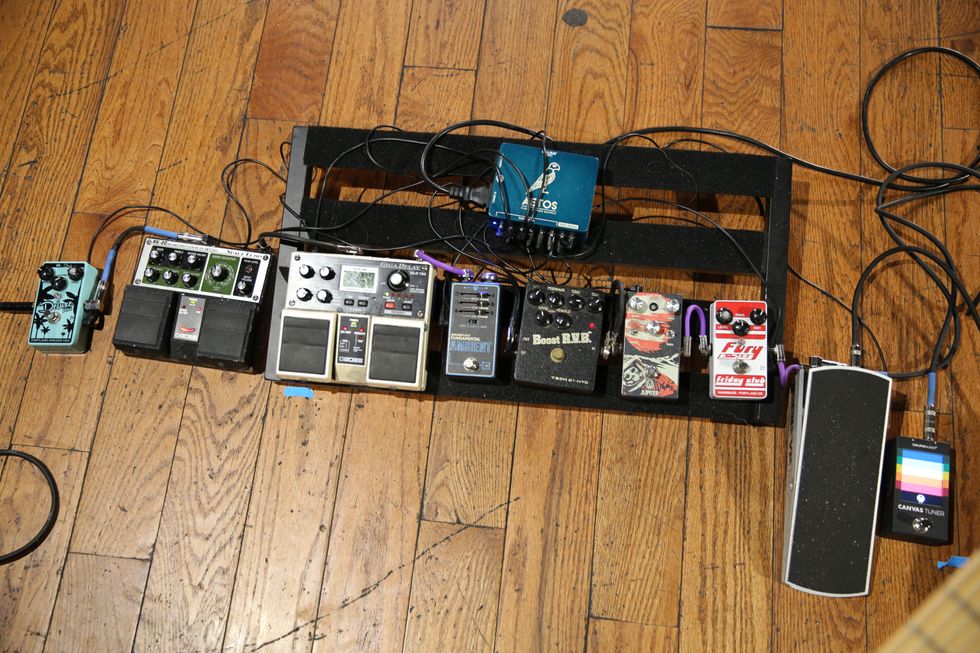
The Boss DD-20 Giga Delay and Tech 21 Boost R.V.B. have been with Galindo since the early days, and he considers the Tech 21 to be the most essential tool of his kit. Aside from those, there’s a Walrus Canvas Tuner, Ernie Ball VP JR, Friday Club Fury 6-Six, Walrus Jupiter, Walrus Fundamental Ambient, Boss RE-20, and Mr. Black Deluxe Plus. A Walrus Aetos powers the party.
Smooth as Sandpaper

This Fender Jazzmaster, Huft’s first, was bought from Full of Hell guitarist Spencer Hazard, who equipped it with its “awful sandpaper texture” finish. Huft doesn’t use the rhythm circuit, so he’s taped it off. He plays with both pickups engaged at all times, including the humbucker rail pickup in the bridge.
United Solid-States
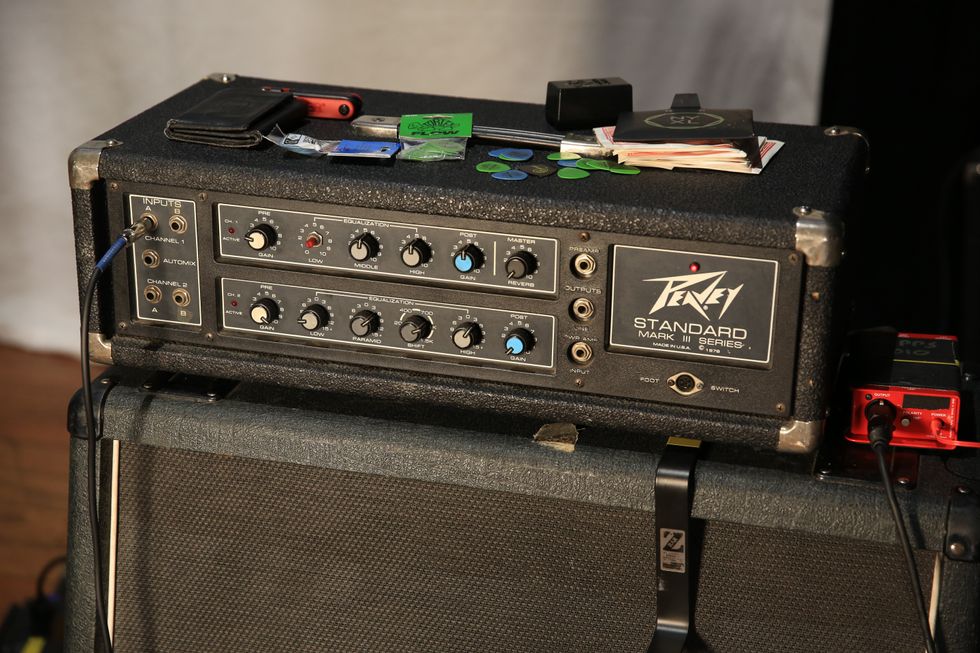
Huft has a soft spot for 1970s solid-state amplification, which makes this Peavey Standard Mark III series a perfect match for TWDY: It’s cheap, and it’s loud.
Nicholas Huft’s Pedalboard
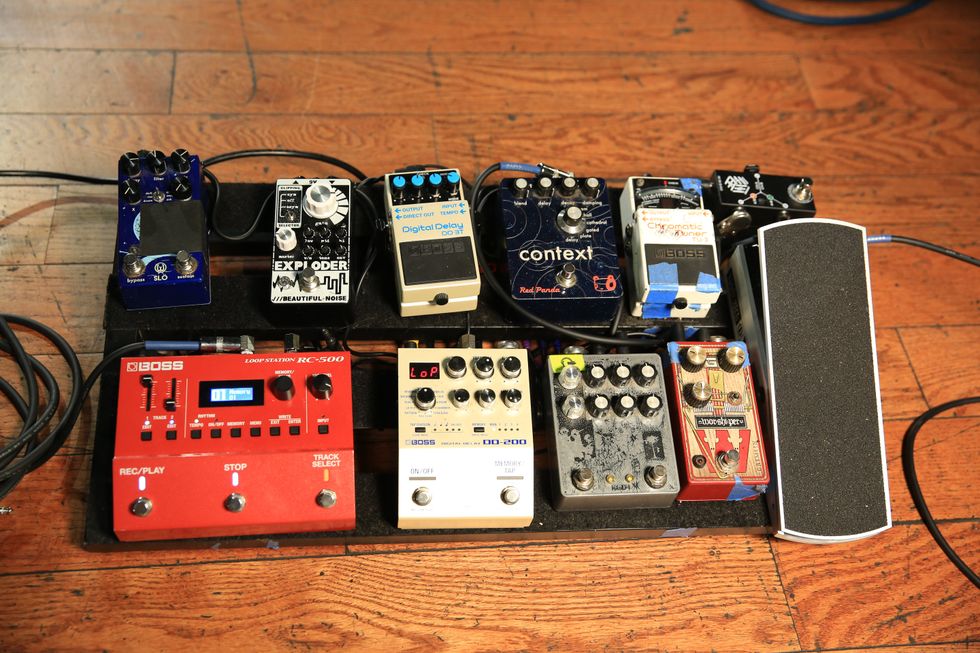
Along with an ABY switcher, Huft runs a Boss TU-3, Ernie Ball VP JR, Gremlin Machine Shop Worshiper, Dead Air Portrayal of Guilt/Matt King Dual Drive, Boss DD-200, Boss RC-500, Red Panda Context, Boss DD-3T, Beautiful Noise Exploder, and Walrus Slo.
Cheap and Cheerful
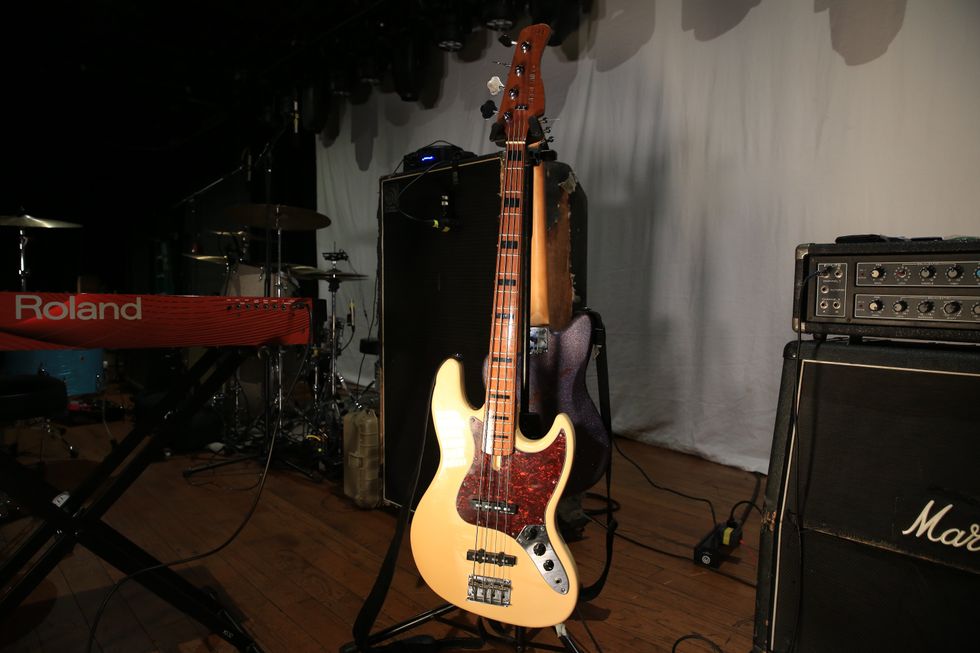
Billips explains that he and his bandmates grew up on cheap instruments, and they still feel like home, so that’s why he rocks with this Marcus Miller Sire bass.
Community Cranker
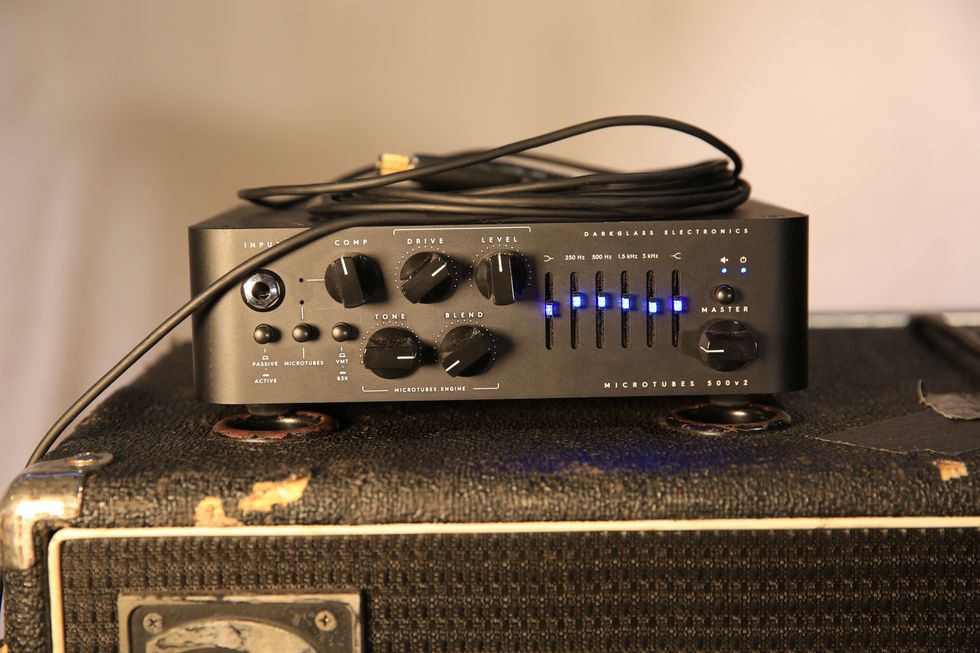
Billips and his bandmates split on this Darkglass Electronics Microtubes 500 v2 head, which they share collectively.
Ethan Billips’ Pedalboard
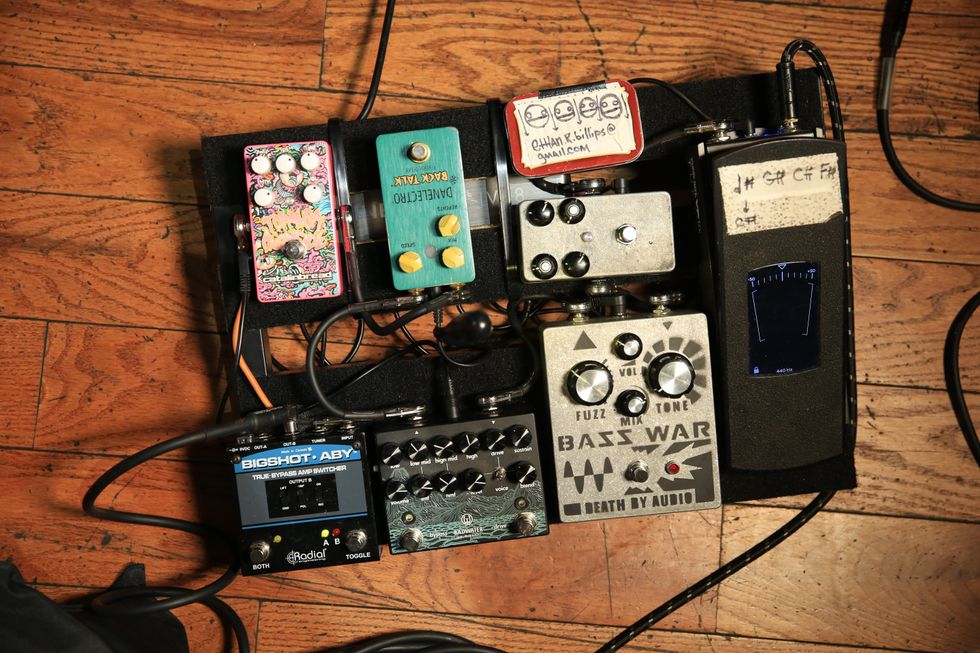
Billips runs an Ernie Ball VP JR Tuner, a prototype bass overdrive from Mr. Black, a Death by Audio Bass War, Walrus Badwater, Danelectro Talk Back, Catalinbread Topanga, and a Radial BigShot ABY.

Be More Like Led Zeppelin
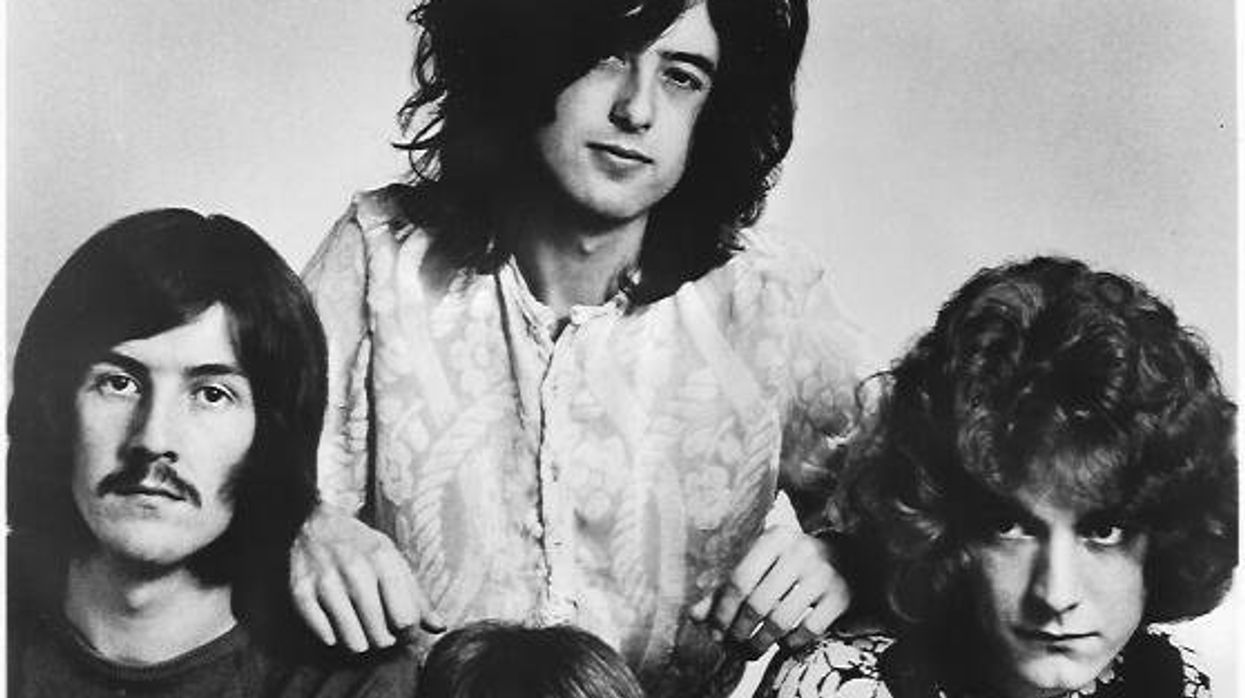
Making great music requires pushing the envelope, not pushing buttons.
As a teen, I signed over my soul to the Columbia House mail-order mafia and bought the first few Led Zeppelin albums. I wore those albums out, dropping the needle in front of the “Heartbreaker” solo, “Black Dog,” and “Stairway” daily. Eventually I moved on to other obsessions and forgot how amazing this band was—until last night, when I watched Becoming Led Zeppelin, Bernard MacMahon’s 2025 documentary. The film, which earned a 10-minute ovation at the Venice Film Festival and grossed $13.2-million by May 2025, charts the explosive rise of Jimmy Page, Robert Plant, John Paul Jones, and John Bonham from their 1968 formation to 1970’s global dominance.
Although Page and Jones had worked together as session musicians, the first time the Zep lineup played music together was a jam in a tiny, rented rehearsal room in 1968. They tested their collective sound, starting with blues standards like “Train Kept A-Rollin’” and “Smokestack Lightning.” Forty-four days later, they were recording their first album, which they completed in 36 studio hours. This raw fusion of blues, rock, and psychedelic chaos, using a 4-track recorder and a shoestring budget of £1,800 (about $4,300, then), helped usher along a paradigm shift in music. Tracks like “Dazed and Confused” and “Good Times Bad Times” took wild risks, blending modal riffs, orchestral swells, and improvisational fire. Led Zeppelin was also incredibly diverse, with the heavy blues balanced by the acoustic “Black Mountain Side,” which was inspired by folk and Indian music. Zep II pushed further, from the primal riff of “Whole Lotta Love” to the semi-pastoral “Ramble On.” Page’s violin bow on guitar and Bonham’s heavier-than-heavy drumming defied norms, while Plant’s primal vocals careened between octaves.
Most of today’s modern music is polished to predictability, sterilized, and quantized. I bet that 99 percent of the sessions I’ve played on over the past two decades were all built on a grid with a stagnant click. Zep’s approach to tempos is more like classical music, where the tempo follows the emotion. “Dazed and Confused” starts with a slow, brooding tempo (around 60 to 70 bpm) driven by a descending bassline and Page’s eerie guitar. The middle section accelerates into a frenetic jam (around 120 to 140 bpm), with Bonham’s aggressive drumming and Page’s wild soloing, before slowing back down for the haunting violin-bow section and a final explosive ramp-up to 140 bpm. On “Babe I’m Gonna Leave You,” the transitions are so abrupt it feels like a car ran a red light and hit your passenger door. Zep would have been boring if they were constrained by a click.“If ‘Stairway to Heaven’ debuted today, would anybody hear it?”
Zeppelin’s tones and timbres also kept it unpredictable and endlessly interesting. Although John Paul Jones’ ’62 Jazz bass, Bonham’s Ludwig Super Classic, and Page’s guitars did most of the heavy lifting, Zep gave us vast sonic variety. Between the four members, they played 15 instruments on their first three albums and went to great lengths to make every song its own, unique sound. Yet, regardless of the instrumentation, Zeppelin always sounds like Zeppelin.
Rock ’n’ roll was built on experimentation and rebellion. It’s truly a DIY genre. So how did modern rock become so homogeneous and tame? Today’s unlimited digital tracks and AI tools (used in 60 percent of 2024’s Top 40, according to MusicTech.com) encourage overproduction, smoothing all quirks along the way. Radio and streaming exacerbate this as labels push 3-minute singles with hooks in 30 seconds to fit ad-heavy radio and prevent Spotify skips. Zeppelin’s era had FM stations playing 7-minute epics. Today, labels prioritize safe bets, favoring formulaic hits over risks. Social media and streaming reward conformity—songs must grab instantly, not unfold like a movie. If “Stairway to Heaven” debuted today, would anybody hear it?
By comparison, the 1960s were an incredibly open-minded time. Labels were looking for something to take a chance on because the outliers were paying off. The Beatles, Bob Dylan, and Hendrix successfully took chances, which enabled others like Zep to push the envelope farther, paving the way for yet more experimental artists like Bowie and Van Halen. The last boundary stretcher was probably Nirvana. That was 34 years ago.
There’s tons of amazing music being made today. But there’s also a whole lot of trend following rather than trend setting. Now that AI is writing/producing/creating music, that’s not going to diversify the mainstream. Becoming Led Zeppelin reminds us that music thrives on urgency and daring. Take chances.“With the new opportunities that I have ahead, I need to prioritize my long-term future”: Prog virtuoso Jason Richardson leaves All That Remains after 7 years
“The first one was a struggle. Making the video was harder than making the album. I was fully expecting that it was going to be a train wreck”: How guitarist and YouTube sensation Rob Scallon manages to write – and record – a full album in one day
“Playing Dean Town forces me to keep my chops up. Vulfpeck fans can sing every note of that bassline”: Joe Dart breaks down his lightning-quick studio approach – and how he tackles his hardest bassline to play live
Jason Richardson leaves All That Remains to focus on “new opportunities”

Jason Richardson has left All That Remains to focus on “new opportunities”.
It’s a departure that Richardson explains is fully civil and supported by the band. “All That Remains and I have decided to amicably part ways,” he writes in an Instagram post. “I’m incredibly proud of the record we made together and grateful for the relationships I’ve built during my time with the band.”
He goes on to allude to the next chapter of his career: “With everything happening in my own career and new opportunities that I have ahead, I need to prioritise what makes the most sense for my long-term future. There will be updates soon that I’m really excited to share with you all!”
The guitarist even teases that he’s been “grinding on a lot of different things behind the scenes”, noting that he’s “feeling very optimistic” about these mysterious upcoming projects.
To further show the lack of bad blood, he closes off with well-wishes for his former All That Remains bandmates. “I genuinely wish the rest of the band the absolute best in everything they choose to pursue,” he writes.
Richardson originally joined the All That Remains ranks back in 2018, following the passing of the late Oli Herbert. The original lead guitarist and founding member had tragically drowned in a lake behind his Connecticut home earlier in the year.
Prior to joining All That Remains, Richardson was also a member of prog metalcore unit Born of Osiris and deathcore gang Chelsea Grin. He’s also pursued his own solo projects throughout the years, releasing 2016’s I and 2022’s II records.
While details of the guitarist’s upcoming plans remain a secret, fans are already making some jokes about his pattern of hopping between bands. Over on Richardson’s Facebook post sharing the same news, one fan even humorously notes that, yet again, “Born of Osiris need a new guitarist”.
Another has also joked about Richardson’s departure of All That Remains will leave the band unable to perform the tracks he helped write on 2025’s Antifragile record. “My man left them with an album no guitarist is gonna be able to play,” one commenter jokes.
The post Jason Richardson leaves All That Remains to focus on “new opportunities” appeared first on Guitar.com | All Things Guitar.
“I got tired of carrying different guitars with me. It’s delightful”: Skunk Baxter is a session legend – and his cutting-edge guitar rig probably isn’t what you expect
“It got stuck in the snow. We were like, ‘The truck’s not making it, the gear is not making it”: Primus’ Larry LaLonde on how he and Les Claypool ended up with off-the-rack gear from Guitar Center right before a show
“I wish I’d been treated more fairly by the record execs, but I was part of the creation of one of the biggest bands of all time. That’s a nice legacy”: How LA guitarist Chris Weber laid the foundations for Guns N’ Roses in a single studio session
A guide to the best Big Muff-style pedals, from classic reissues to boutique oddities
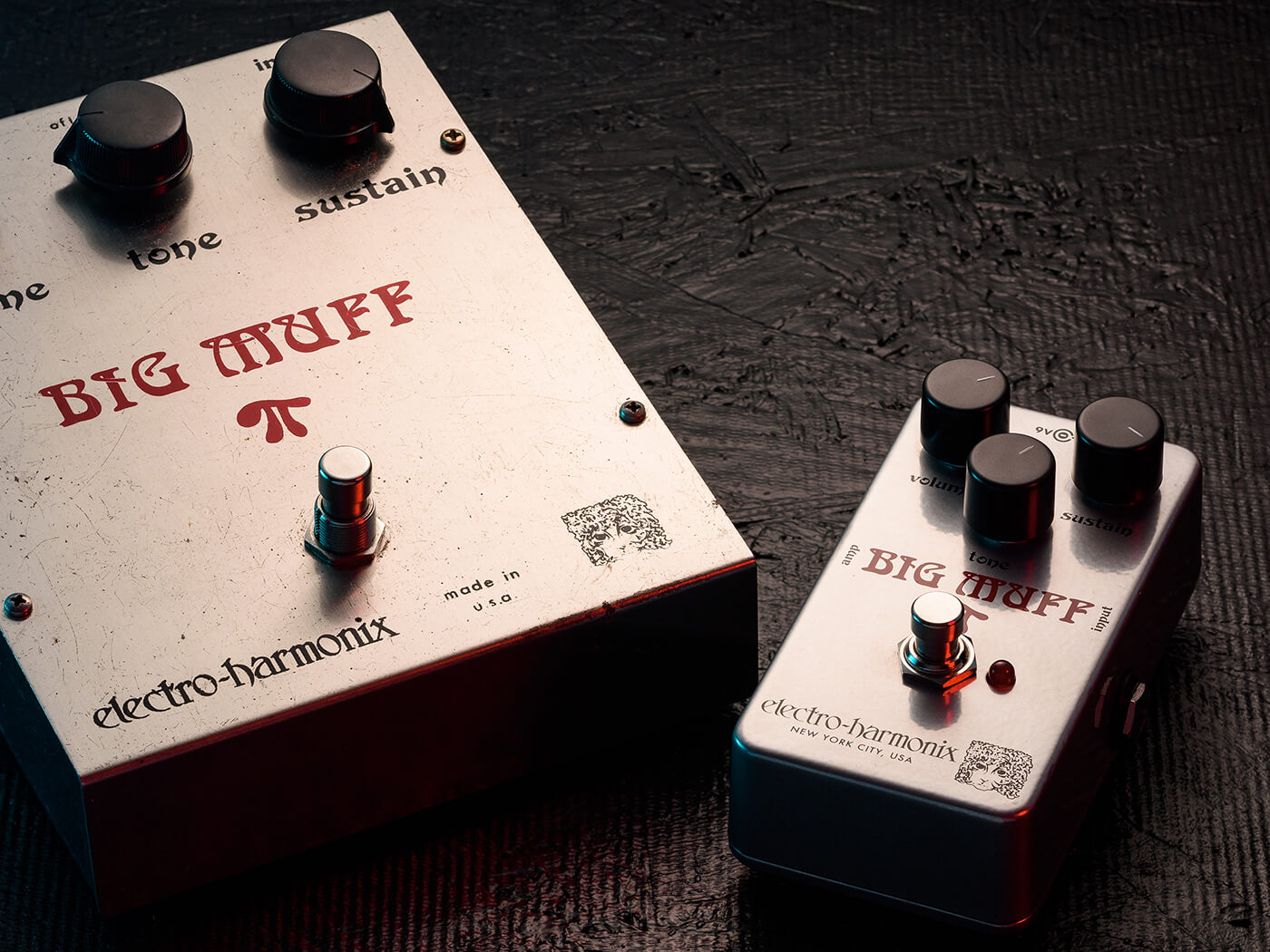
The Electro-Harmonix Big Muff is one of those rare pedals that’s kept the collective imagination of guitarists engaged ever since its debut in 1969. Thanks to its frankly absurd sound (and, lest we forget – name) it remains one of the most recognisable and infamous distortion devices out there. Versions of it exist today as both official reissues, boutique recreations and greatly modified takes on the circuit from builders big and small. But which is right for you? Should you swing for a fancy boutique recreation or will one of the regular ol’ reissues have you covered? Let’s explore all things Big Muff.
Already au fait with the circuit, or just want to dive straight into some pedals? Click here to go straight to the best Big Muff-style pedals you can buy right now.
What makes a Big Muff circuit a Big Muff?
First things first – we’re going to be talking about a lot of the different parts of the base Big Muff’s actual circuit, so before we get completely lost in a haze of solder – let’s do a quick refresh as to how the Big Muff actually works.
While there are many different versions, most of the differences boil down to having different values into a consistent circuit. This is basically just effectively four gain stages stacked one after another, with a tone stack before the output. One gain stage sets the level of distortion. The second two boost and distort, and the final sets the output volume.
 Most Big Muff-style pedals are based on a schematic of this general structure, with some additions and modifications to component values.
Most Big Muff-style pedals are based on a schematic of this general structure, with some additions and modifications to component values.
Input gain stage
This is a basic transistor-based amplifier that boosts and buffers the input signal, and removes some extraneous frequencies. It’s also where you’ll find the gain control, which works by controlling the level of signal going into the next part of the circuit.
Clipping stages
The next two transistors are used in (normally) identical configurations to distort the signal twice in a row. Two diodes are placed back-to-back in the feedback loop of each stage, creating soft clipping. But because of the extremity of the gain and the fact that it’s happening twice, the result is a hell of a lot of distortion, to the point where it’s as harsh and sharp-edged as any hard-clipping circuit.
The clipping diodes that are used here are a common modification for both DIY’ers and boutique variants. If you have a standard, large-box through-hole Big Muff, swapping the diodes out is a great way to experiment with modding! Try red LEDs for an open, less compressed sound – or Germanium diodes for a squishier, more compressed sound. Due to how the circuit works, though, it’s really only the second diode clipping stage that’s worth modifying – adjusting the first one won’t have much impact.
Some pedals also offer the option of removing one or both of the clipping stages entirely. This doesn’t remove all of the distortion, as there’s still some coming from overloading the transistors, but it does make for a much more boost-like sound and a big jump in output volume.
Tone stack
The classic Big Muff tone stack uses a potentiometer to create two different filters (one high-pass and one low-pass) and blend the result. Turning the tone control down mixes in more of the low-pass filter. Turn it up, the high-pass filter. In the middle, the two filters are combined – however on a stock Big Muff, both the high- and low-pass filters still affect the midrange when the knob is at 12, leading to that signature “scoop”.
The tone control’s use of a dual-filter design is also what allows it to be much more impactful than other passive tone stack designs – maybe too powerful, depending on the rest of your rig. A Big Muff on full treble can be a bit like having a jar of wasps chucked at your head, and on full-bass settings, it can easily overwhelm smaller amps. And while an overwhelmingly bassy distortion sound can be huge and awesome by itself, it can mean that you’re competing for sonic real estate with your bassist. Because of this, and the midrange scoop, the tone control is where you’ll see a lot of the ‘boutique’ Big Muffs make modifications.
Output stage
The Big Muff’s output stage is effectively an LPB-1 – this simply boosts the signal level back up after it gets cut down by the tone control’s filters. How much of a boost Big Muffs provide really varies – Muffs have used plenty of different transistors and component values across the years, meaning that some will give you a really hefty boost, while others will remain pretty close to unity gain. This is also something that ‘boutique’ big muffs can offer a little more control over.
The best Big Muffs you can buy right now
There are plenty of awesome options for fans of this venerable circuit still on the market. We’ve rounded up everything from the reliable classics to our favourite boutique oddities – so let’s jump in!
Electro-Harmonix Big Muff Pi
[products ids=”3yWcvIzNoO9xB6rijxsM35,7IfkFSlDLkpEAbSMV4CVg0″]
Electro-Harmonix still makes the standard, big-box Big Muff Pi. While it’s affordable and reliable, it’s also a rather inconvenient size – this thing really earns the Big part of its name. It has a certain cool factor, for sure, but if you want it in a more sensibly-sized box, you can check out the standard Nano Big Muff Pi. Keep in mind, though, that this modern variant of the circuit is famously a little more bright and scooped in the midrange than the more vintage-voiced circuits. This style of Muff was used to great effect by Jack White in the White Stripes with a scything, sharp sound.
Triangle Big Muff Reissue
[products ids=”33w8LgfNxoN927DUOTHnPB”]
This pedal is a recreation of the earliest version of the Big Muff. Compared to the more modern circuits, it has a smoother, slightly less saturated sound at max settings, but it can absolutely still provide that huge violin-like sustain the pedal is known for as a whole. Given the age of the circuit it’s recreating and how pedals were made at the time, there’s not really one single Triangle circuit this pedal is based on, however it’s a faithful amalgam of various vintage units.
Ram’s Head Big Muff Reissue
[products ids=”3rbb8zWI1Am5b80I7DisMT”]
The Rams head recreates the 1970s v2 version of the circuit. It’s relatively similar, sonically, to the Triangle Muff, if a little louder in its output. If you’re gunning for a Gilmouresque lead sound, you can’t go wrong with either this or the Triangle. There’s also the J Mascis version of the pedal, a nod to the Dinosaur Jr. frontman’s affinity for the circuit, however keep in mind that this is only a cosmetic change over the regular reissue.
Green Russian Big Muff Reissue
[products ids=”766c6czBla78kcYvjzRaYO”]
The Green Russian Big Muff recreates the version of the circuit made in EHX’s Russian Sovtek factory across the 1990s. It has a reputation as a bassy, more doom-appropriate version of the circuit with a bit more of a mid-push – and the reissue totally nails that sound. It’s a great pairing with an Orange amp, C-standard tuning and half a crate of beer.
Op Amp Big Muff Reissue
[products ids=”4JglNeTKWHiLWNcQRvCVRA”]
The Op-Amp version of the circuit replaces the four transistors with two op-amps. The result is quite a different sound, one that you’ll immediately recognise if you’re a Smashing Pumpkins fan. This is also notably one of the Big Muff reissues with a tone bypass switch – this makes the circuit skip the dual-filter tone control, resulting in a more full-frequency, less scooped sound.
Evil Eye FX Warg
[products ids=”5Adblgiy8zKnX1V6oCJEyG”]
Onto some non-EHX options! The Evil Eye FX Warg is one of the coolest new boutique Big Muff-inspired pedals I’ve checked out recently. Inspired by the Ace Tone FM-3, this pedal also offers a switch to go between the stock tone control values and a flatter midrange – perfect for getting your full-bore fuzz sound to fit better in a mix.
Check out my review of the Warg for more.
EarthQuaker Chelsea
[products ids=”6VBp7ssc3rNh5JahzXOYDy”]
The first of three high-quality options from EarthQuaker Devices, the Chelsea is a cool variant of the Big Muff based on a unit owned and used by LCD Soundsystem’s James Murphy. It’s voiced really well for both bass and low-tuned guitars, and includes a tone bypass switch for some extra versatility.
Check out my review of the Chelsea for more.
EarthQuaker Hizumitas
[products ids=”yAw13mlAO4DY6NhkuqTZL”]
Where the Chelsea is relatively restrained, the Hizumitas is less so. It’s one of the loudest Big Muff variants out there, which is unsurprising if you’ve ever heard Boris’ music. Wata’s Elk Sustainar unit – a rare Japanese clone of the Big Muff – was meticulously recreated here, and its enormous output and unique tone sweep allow you to tune down and drop out with the best of them.
EarthQuaker Hoof
[products ids=”1InHpMjPOVeUbz2pEtcVVa”]
Rather than any one musician’s pedal, the third EQD option here is a very modified version of the EHX Green Russian. It uses a mix of germanium and silicon transistors for a more ragged, unpredictable sound, as well as some LED clipping diodes rather than the standard 1N4148s you’ll see more commonly used. If you’re looking for something totally original, rather than just a vintage recreation, this is a great option.
Black Arts Toneworks Pharaoh
One of the oldest doomed-up takes on the circuit, first launched back in 2011. The Pharaoh adds a separate highs control for more detailed EQ, as well as a three-position switch to choose between germanium, silicon or no diode clipping. That last option helps it sit well in a full rig based around pushing the front end of a tube amp for a thick, full-bore sound.
Keeley Electronics Moon
The Keeley Electronics Moon is an expanded version of the Op Amp Big Muff, featuring a three-position EQ switch for either scooped, flat or boosted midrange. It’s a pretty bassy version of the circuit overall, despite this added versatility – so make sure your rig is ready to handle the extra low-end! If it can, though, this is an awesome way to get that full-frequency Smashing Pumpkins-esque sound, or create a huge base-layer for shoegazey reverb. It’s also a killer option for bass guitarists.
KMA Machines Chief Disruptor
[products ids=”4oLU8h4shIbKDKspad4gzO”]
Now we’re into the real weeds of totally weirding the standard Muff circuit. The KMA Machines Chief Disruptor features a bunch of added features, including three different gain modes, a pre- or post-EQ clean blend, an active two-band EQ, a foot-switchable, expression-controllable parametric midrange and a switchable top-boost. If the Chief Disruptor can’t find a place in your rig, perhaps nothing can.
Death By Audio Fuzz War
[products ids=”5aAOX4JGOqtMcIFmIdHnFA”]
The Death by Audio Fuzz War is an example of just how far you can take the circuit, but not necessarily by adding extra features. Version two of the Fuzz War shares some similarities with the Big Muff in the rough circuit topology, but the resulting sonics are totally out there – it’s extremely loud and very dynamic thanks to a single clipping stage. The Fuzz War is great for those looking to go all psychedelic freak-out mode as much as it is for those looking to summon monoliths of doom and destruction.
Other options
There’s no way we could ever cover all of the Big Muff-inspired pedals out there – it is, after all, one of the most revered, cloned and modified circuits within the world of pedals. There are countless small builders doing everything from heavily-adjusted versions to faithful vintage recreations!
The post A guide to the best Big Muff-style pedals, from classic reissues to boutique oddities appeared first on Guitar.com | All Things Guitar.
Americana Champion Margo Price Takes Flight with Her New Signature Gibson J-45
“I can't help but question why Gibson decided to label this model as a Les Paul”: Gibson Les Paul Music City Special 50th Anniversary review
“It’s that Rolling Stones thing – using two guitars to make one part bigger. We’re aiming to sound more like one-and-a-half players than two!” Too rock for country and too country for rock, Morganway are an old-school guitar duo in the best way
D’Angelico celebrates Grateful Dead’s 60th anniversary with 3 special-edition guitars – which revive the Lightning Bolt design
“After touring so much, I do not enjoy sweating bullets, having to nail every little surgical run”: Yvette Young on the pressures of touring in the social media age – and why we all need to rethink our relationship with music
“Maybe some young kids will be like, ‘Wow, I saw that movie. I like what he played. I wanna try that’”: Buddy Guy’s cameo in Sinners was to “help the blues”

Genres are often revived and reshaped in the image of new generations, often in unexpected ways. Just look at country music’s popularity right now, as the likes of Beyoncé, Post Malone and Lana Del Rey have tried their hand at the genre, rather successfully in all cases, we might add.
Another genre that’s hinting at a revival is the blues, thanks to it being a central feature of Ryan Coogler’s horror film Sinners. Playing a cameo role of Sammie in his later life, blues veteran and multiple Grammy winner Buddy Guy used the film as a platform to “help the blues”.
During a recent phone interview with Press Democrat, Buddy Guy reveals how he struck an agreement with B.B. King and Muddy Waters, that whoever lived the longest had to keep flying the blues flag. Now at 89 – today (30 July) is his birthday, in fact – and 70 years into his journey as a musician, Guy is one of the last original Chicago blues men to keep playing.
Driven by this life mission, Guy hopes that Sinners’ celebration of the genre could help it to became more popular with younger people: “Maybe some young kids will be like, ‘Wow, I saw that movie. I like what he played. I wanna try that.”
Guy is confident that the blues still resonates plenty of people, even younger children, who often come up to him after his performances. Modestly, he puts this down to the power of the genre rather than his own skill: “[It’s] not me – the blues,” and goes on to say that “When they hear it, they love it.”
So what’s stopping the blues from having that level of hype country music has? Guy thinks FM radio stations are to blame for it flying under the radar: “The blues has been treated like a stepchild,” Guy tells Guitar Player. “Your big FM station don’t play our music anymore…” While he celebrates the fact that satellite radio plays the blues more often, they “don’t play the deep stuff”.
This means that Guy is not thinking of retiring as a blues player quite yet, even though he told Guitar Player that he has “thought about retiring twice.” The guitarist is in good spirits about it though, in his own words: “My health ain’t doing too bad, so… I just try to play the best I can”.
The post “Maybe some young kids will be like, ‘Wow, I saw that movie. I like what he played. I wanna try that’”: Buddy Guy’s cameo in Sinners was to “help the blues” appeared first on Guitar.com | All Things Guitar.
“The bond we shared with him ran far deeper than music”: Pantera cancel tour dates as Zakk Wylde says they need “time to grieve” Ozzy Osbourne’s death
![[L-R] Ozzy Osbourne and Zakk Wylde](https://guitar.com/wp-content/uploads/2025/07/Ozzy-and-Zakk-Wylde@2000x1500.jpg)
In light of Ozzy Osbourne sadly passing away on 22 July, Pantera have announced that they will be postponing and cancelling a slew of upcoming tour dates to mourn the Black Sabbath icon’s death.
The heavy metal unit – comprising Phil Anselmo, Zakk Wylde, Rex Brown and Charlie Benante – share the news on Instagram.
“Ozzy wasn’t just a legend who shaped the very foundation of heavy metal and inspired Pantera from the beginning – he was family,” the band write. “A mentor, a brother, and a constant presence in our lives both on and off the stage. The bond we shared with him ran far deeper than music.”
“In light of this profound loss, we need time and space to grieve – to be with our families, our crew, and each other as we process and honour the life of someone who meant so much to us,” the post continues. “Out of respect, and to allow members of our team the time to mourn, we will be rescheduling the following shows.”
In order to allow themselves this “time and space to grieve” Pantera will be cancelling three of their upcoming tour dates. Their 19 July show in Gilford, NH will no longer be happening, as well as their 8 September and 10 September shows in Birmingham, AL and Virginia Beach, VA.
Not every change is a cancellation, however; two shows will be pushed forward to September. The band’s 28 July Saratoga Springs show will now be taking place on 9 September, while their Holmdel show on 31 July has been rescheduled for 8 September.
Pantera held a deep respect for Ozzy’s work, even performing Sabbath cut Electric Funeral in New York on 26 July in his honour. However, touring guitarist Zakk Wylde held an incredibly personal connection with the late star. Not only was he the lead guitarist of Ozzy’s solo band, but Wylde has spoken about their close relationship on multiple occasions.
Wylde even shared a heartfelt tribute to the late Prince of Darkness. “Oz was just the best,” he tells Guitar World. “I have my father, who was a World War II veteran; and then Ozzy, who was almost like an older brother. There was almost a 20-year age gap between us. With our relationship, there was the fun drinking – but if I ever needed advice, I could talk to him.”
“Ozzy is the godfather of our oldest son,” he writes. “Whether I was playing with him or not, if Sharon [Osbourne] called me and my wife up and said, ‘Guys, can you watch the house while we’re away on a business trip?’ I’d do it. It’s like, ‘If you need me to bring milk and eggs over, I’ll do it.’”
“Yeah, that’s how I’ve always looked at it. Ozzy is the godfather of our oldest son. Whether I was playing with him or not, if Sharon called me and my wife up and said, ‘Guys, can you watch the house while we’re away on a business trip?’ I’d do it. It’s like, ‘If you need me to bring milk and eggs over, I’ll do it.’”
Wylde even opens up about the last exchange he had with Ozzy – which, unfortunately, was just a text message. “Everybody and their mother were in the backstage dressing room [at the Back To The Beginning show] and I just wanted to give him a break,” Wylde reveals. “I figured we’d see him later on – the next day or whatever. But no.”
“The last text I got from Oz was saying, ‘Zakky, sorry, it was like a madhouse back there. I didn’t see you.’ He goes, ‘Thanks for everything.’ It was just us talking, saying, ‘I love you, buddy.’ That was it.”
Wylde closes off his tribute on a note of utmost respect: “If I didn’t have Oz, without a doubt, I’d continue playing… but it’s how Ozzy would say what The Beatles did for him, you know? What he gave me with Sabbath, and then with Randy and Jake, it’s a beacon of light. It gives you purpose. So even if I hadn’t played with him, he gave me purpose to be a musician. And without a doubt, that’ll always be with me.”
Today, Ozzy’s funeral procession is set to run through Birmingham’s Broad Street at 1pm ahead of a private funeral.
The post “The bond we shared with him ran far deeper than music”: Pantera cancel tour dates as Zakk Wylde says they need “time to grieve” Ozzy Osbourne’s death appeared first on Guitar.com | All Things Guitar.
“If you listen to Summer Nights, the Van Halen tune, that’s a headless guitar. It sounded fantastic”: Could PRS ever make a headless guitar?
“Aja by Steely Dan isthe blueprint… If there was a formula for every kind of success you could have in music, that recordembodied it”: Young Gun Silver Fox are keeping yacht-rock afloat with lawsuit guitars and 10-year-old strings
Podcast 509: James Kee of East Nash Grass
James Kee of East Nash Grass joins us this week to talk about his band’s forthcoming album ‘All God’s Children’ and the guitar he just acquired and restored, a 1955 Martin D-18 formerly owned by Earl Scruggs!
During our chat, we learn all about the D-18’s restoration (which Nashville luthier Hugh Hansen just completed), East Nash Grass’ forthcoming record ‘All God’s Children,’ why you should always have an Intellitouch tuner on-hand, and so much more.
https://www.instagram.com/jamesalankee/?hl=en
Band photo: Scott Simontacchi
D-18 restoration pics below courtesy of Hugh Hansen:
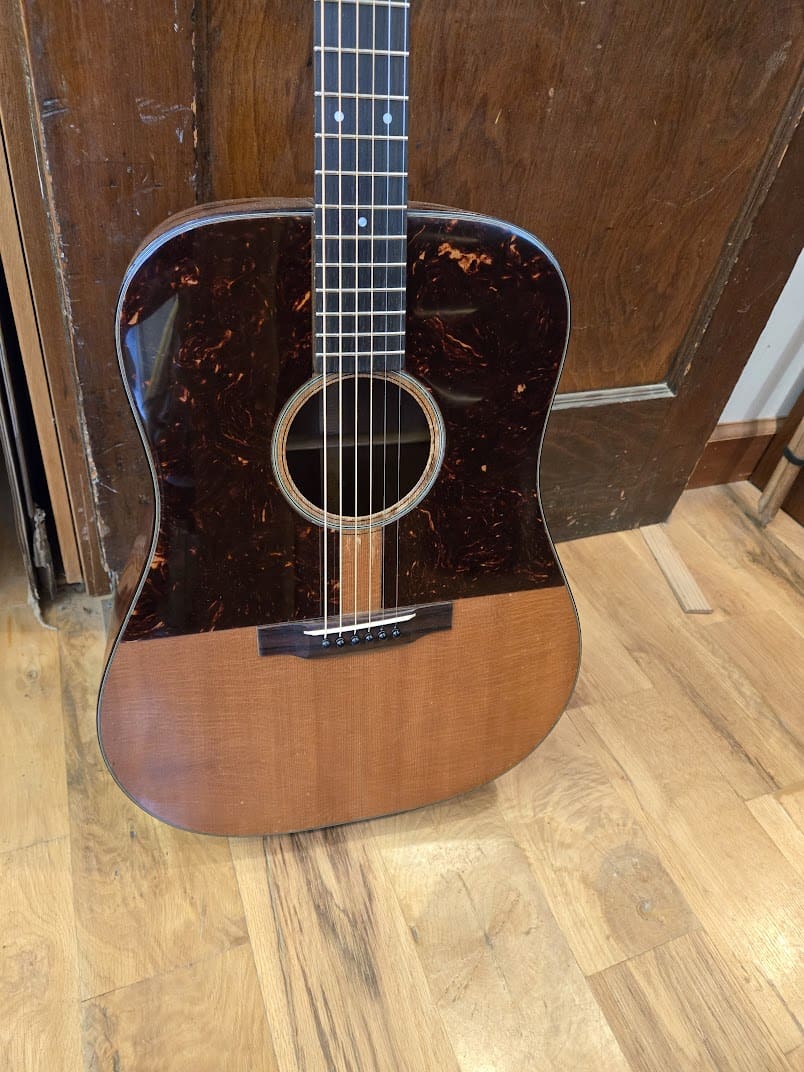
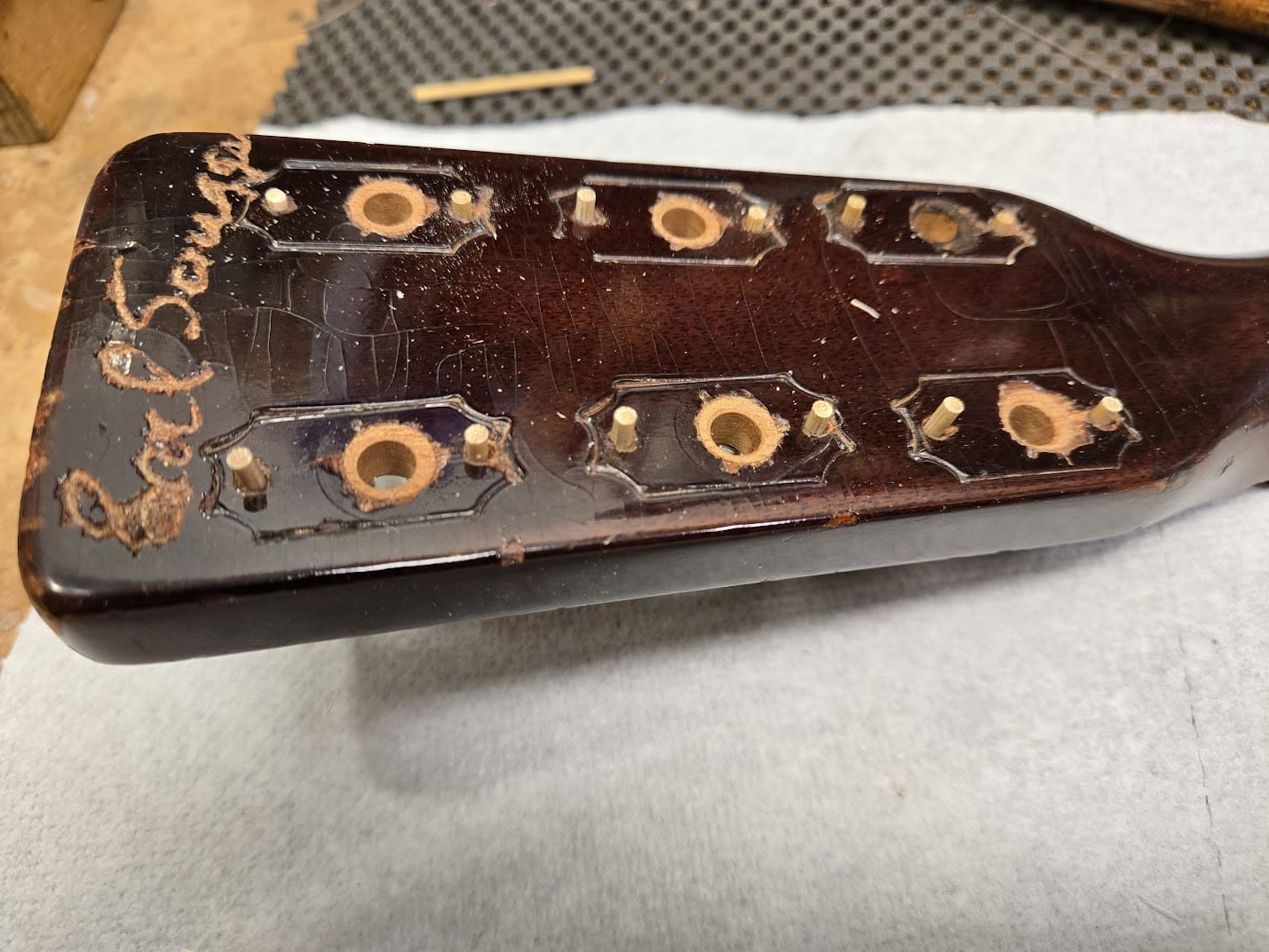
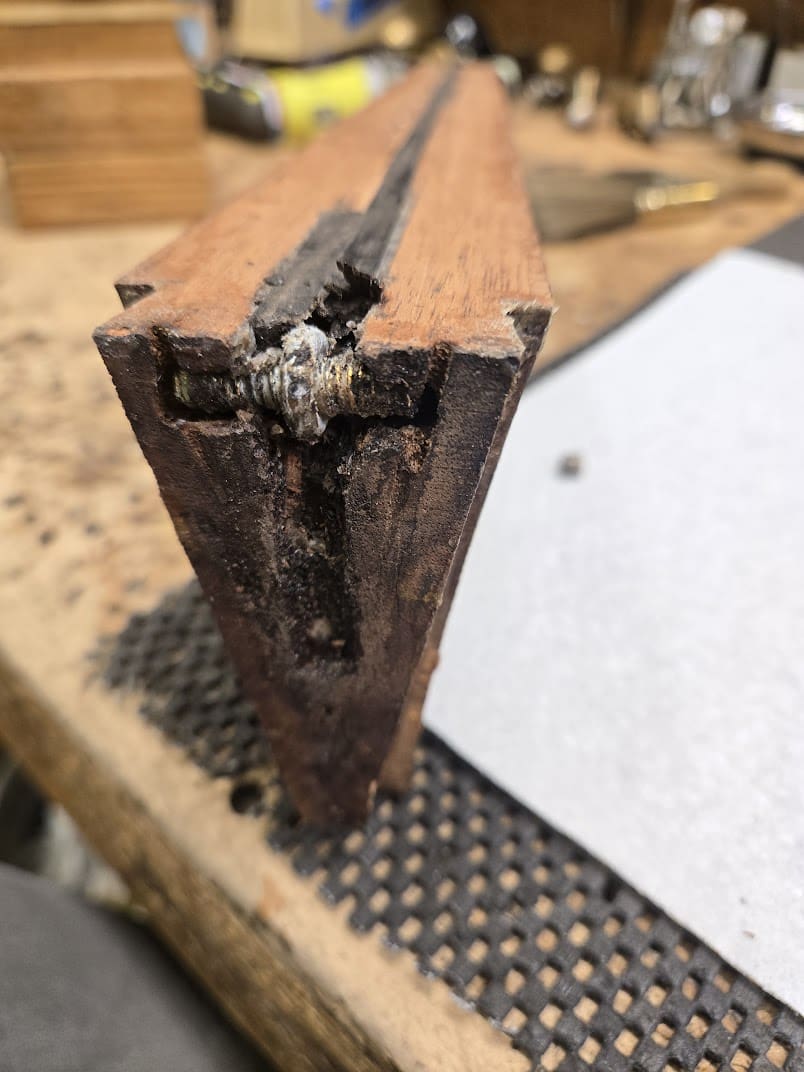
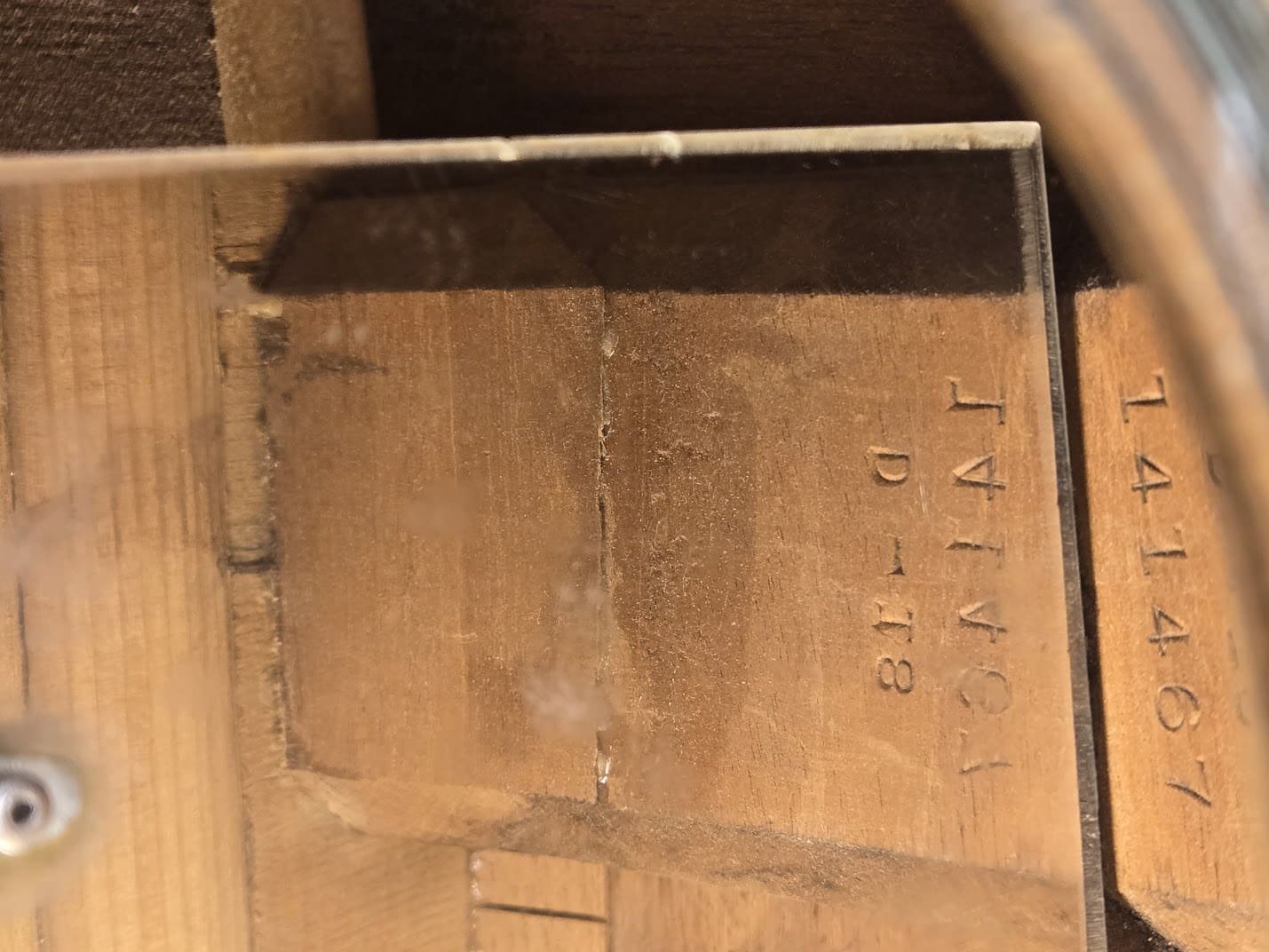
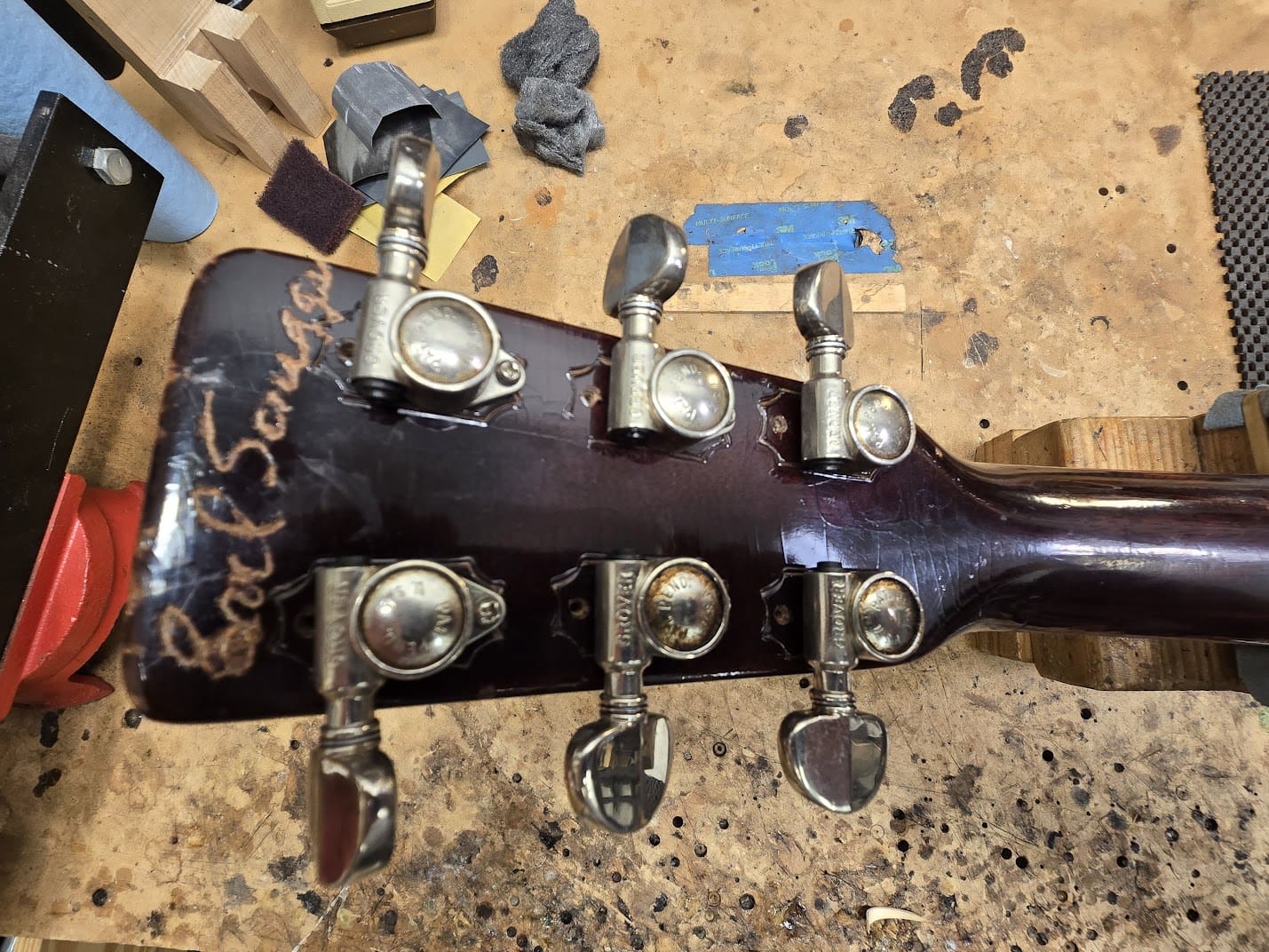
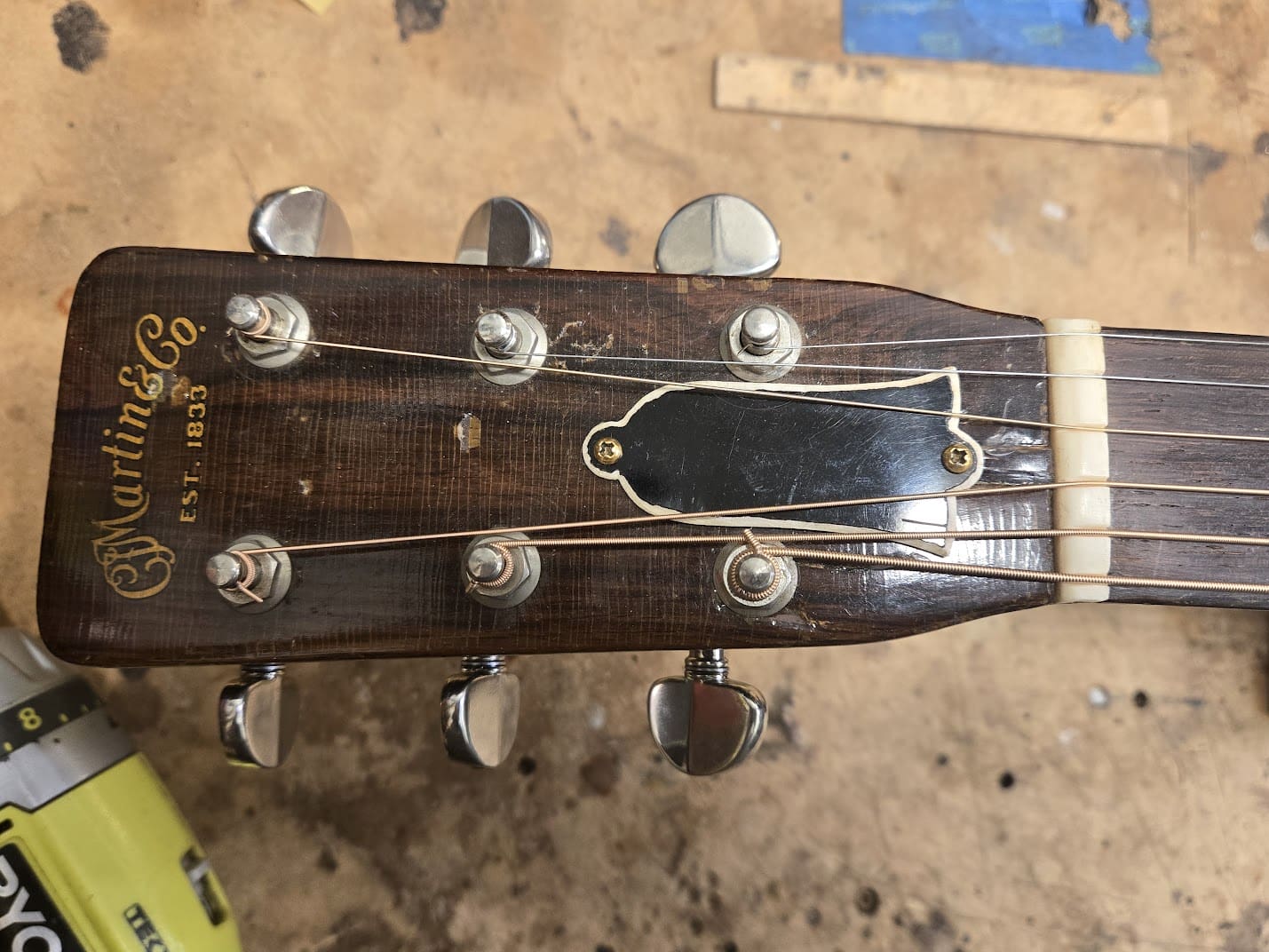
We are brought to you by:
Stringjoy Strings: https://stringjoy.com
(Use the code FRETBOARD to save 10% off your first order)
Mike & Mike’s Guitar Bar: https://mmguitarbar.com
Peghead Nation: https://www.pegheadnation.com (Get your first month free or $20 off any annual subscription with the promo code FRETBOARD at checkout).
The post Podcast 509: James Kee of East Nash Grass first appeared on Fretboard Journal.



